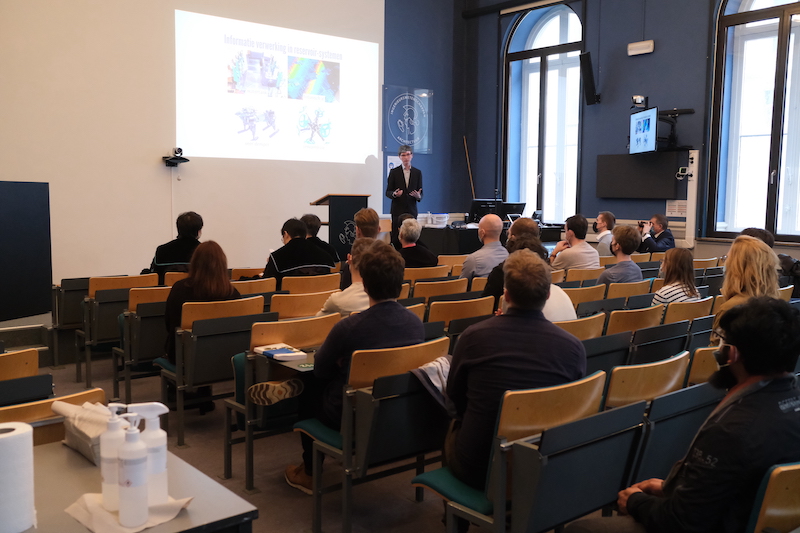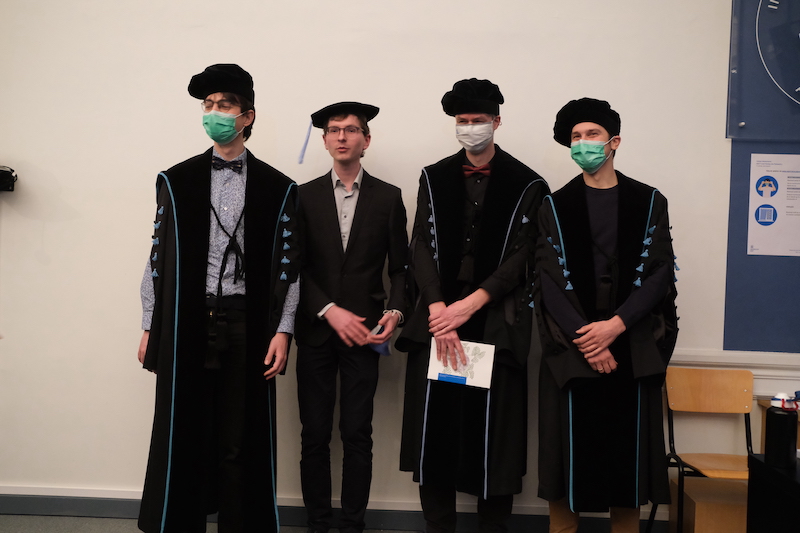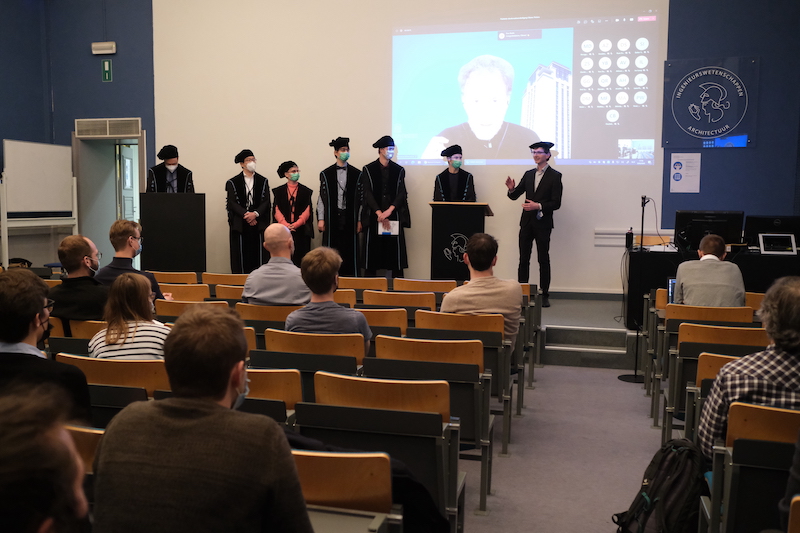PhD defence of Olivier Pieters
Can plants compute? How can we quantify the computational power of plants? That is what Olivier Pieters explored in his PhD which he defended today!



Plant Reservoir Computing
Plants are complex organisms, subject to a large number of environmental variables. These variables in turn influence the plant’s fysiology and phenotype. Here, we consider plants as complex input-driven systems, similar to a reservoir in physical-reservoir computing (PRC). PRC is a paradigm from computer science that uses a physical substrate as computing medium. In a first attempt, we investigated the use of hyperspectral cameras to observe te plant’s state. Limitations of these camera systems limited us from characterising the subtle spectral variations. However, they are needed for PRC with plants. As a result, we shifted our focus to contact-sensing technologies. To that end, we developed a new measurement platform: Gloxinia. Gloxinia was specifically designed for real-time contact sensor readout at high speeds. By means of this platform and leaf thickness measurements, we showed that plants can indeed be used as reservoirs for PRC. Plants were more performant that a control setup for eco-physiological and environmental tasks. We also investigated benchmark tasks such as NARMA and a delay line. However, these indicate that plants are not suited for general-purpose computing. This first experimental demonstration of PRC with plants is an important milestone towards a more holistic view on phenotyping and information processing by plants.
Research on this topic is continuing, with relevant papers and updates being available on the research topic page.